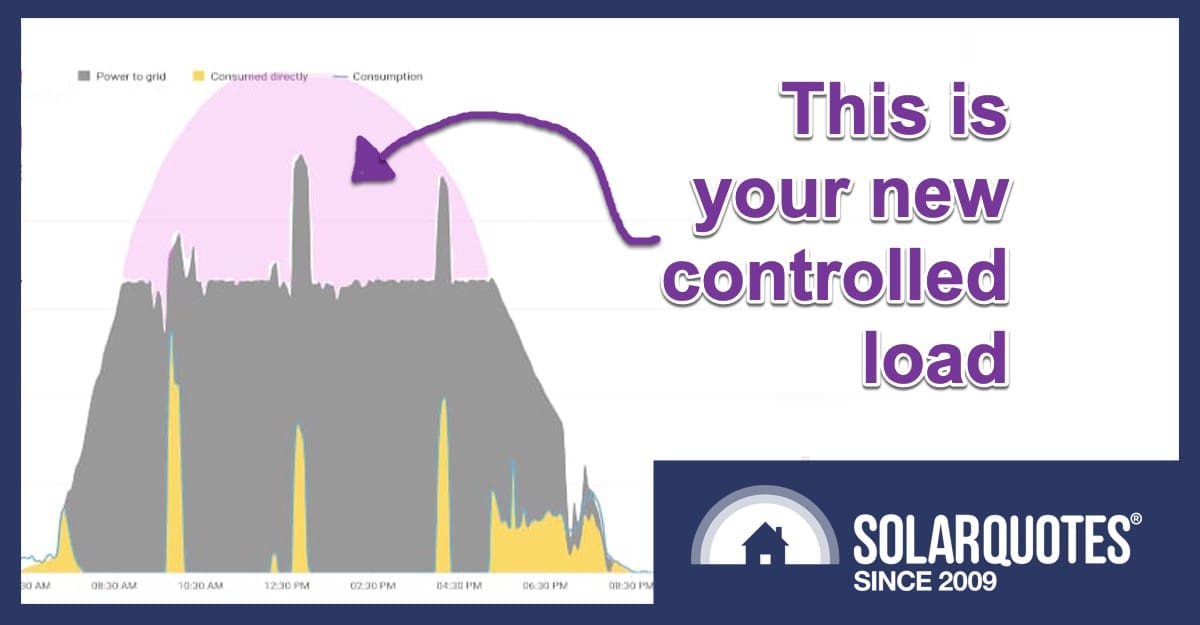
Off-peak, ‘controlled load’ has traditionally been cheap electricity overnight, but these days, “over lunch” is the cheapest electricity ever. If you’ve got a hot water service, floor heating or a similar load, you can take advantage of this ridiculously cheap energy. Read on, and I’ll explain how.
Diversion Is How You Reduce Bills
With solar power system sizes growing and export limits applied, solar energy is often curtailed for many hours on many days. Harvesting this wasted potential is truly picking up energy for free. The capital expenditure is bolted to your roof, so if you can’t export it to the grid, you may as well be using it yourself.
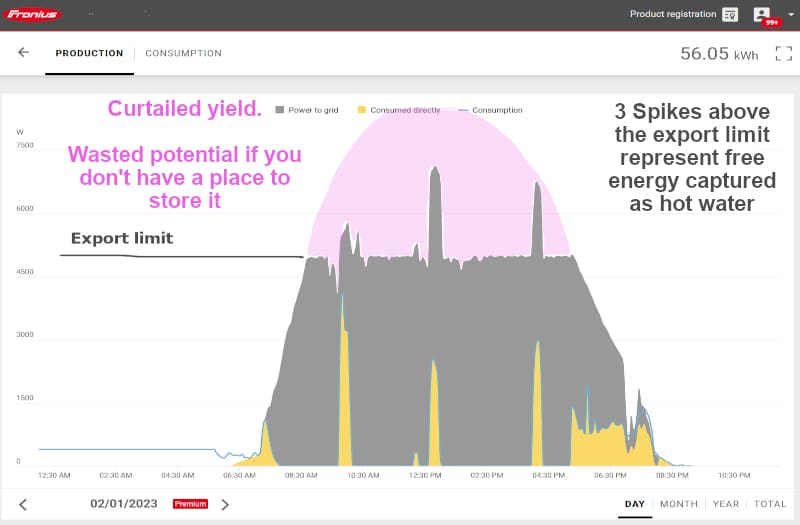
The purple curve represents a perfect solar day
Variable, Flexible, Dynamic
If you have a resistive device, like a traditional hot water service or underfloor heating, then it’s feasible to run variable amounts of electricity into the load. Like your home stereo, if you turn the knob up, it just gets louder.
As the clouds come and go, a dynamic diverter ramps up and down, perfect for capturing every last watt of passing sunshine.
The Green CATCH device has two input terminals, so you can feed your hot water service with homegrown electricity or automatically revert to off-peak whenever it is available from the network.
Except for Queensland, I think they’ve had too much sun, and it’s melted their crayons.
Bang On, Bang Off
If you starve your turntable of voltage, it won’t play records properly, so a dynamic diverter could damage many appliances if it doesn’t supply 100% of the power required. Pool pumps, heat pumps and air conditioners need a relay or contactor to be switched on when it’s sunny (100% power) and off when it isn’t, hopefully not too many times a day.
If you have this arrangement wired up with a changeover contactor, it too will switch on sunshine when it’s available or revert to controlled load when it’s not.
It also pays to put a 2.4 or 1.8kW element in the hot water service, as there’s a much greater chance you’ll be generating or exporting enough power to switch it on and not have to balance the load with imports.
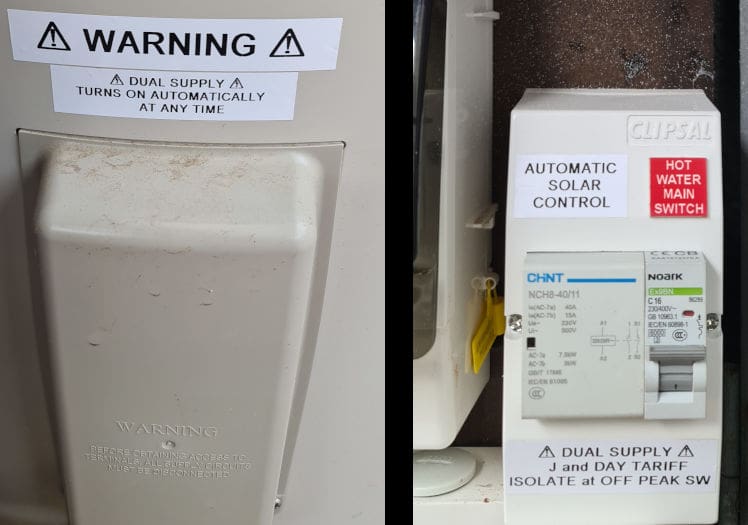
Warning label on the hot water tank and in the switchboard a changeover contactor to swap between homegrown electricity and controlled load
How Did We Get Here Though?
Baseload is jargon that used to mean the minimum load you could justify running a big old steam engine. Now, it’s been hijacked by the nuclear, gas, coal, and troll industries. It roughly translates to “Please, remember when we were kings.”

Three 30MW Parsons turbines at Playford Power Station near Port Augusta. image credit John Moss
These Days, It’s All Different
So people have an incentive to change their behaviour, use their own energy, and live efficiently. It’s actually well suited to large thermal batteries like hot water and ceramic heat banks, although for outright efficiency, we should be using heat pumps.
Off Peak Isn’t The Right Terminology
So when today’s network company is trying to maintain stability and wants to throttle down your solar, air conditioning, or EV charger, it’s worth remembering we have always ceded some control to the network.
Combined with demand response, where you’re paid to economise, and dynamic tariffs to incentivise storage, Megawatts of baseload just disappear in a puff of smoke the industry nerds call Negawatts.
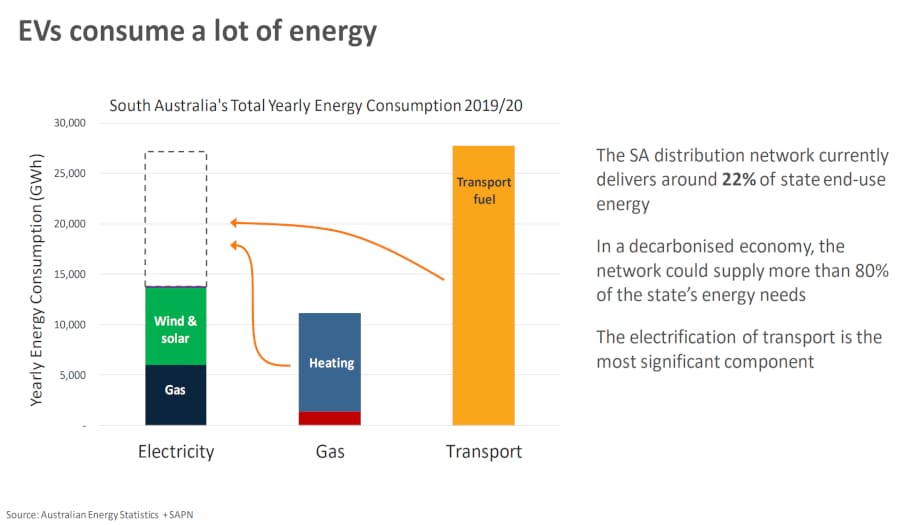
Energy delivered via electricity is set to double. If we get it right there’s not much extra infrastructure needed to distribute it, everyone just has to share.
If everyone demands they’re entitled to a midday feed-in tariff, or to run their air conditioner flat out, charge their EV & cook dinner all at once, then it’ll just get expensive and ultimately unsustainable to overbuild the network to suit.
EV Charging Either Way
I’ve been banging on about using type 1 charging for EVs before. It’s easy to control 2kW with a simple switched circuit. Write to your local member, we should have these available absolutely everywhere our cars are parked during the day.
Type 2 EV charging can also be variable. So solar smart charging is an excellent way to harvest solar yield at rates up to 7 or 22kW.
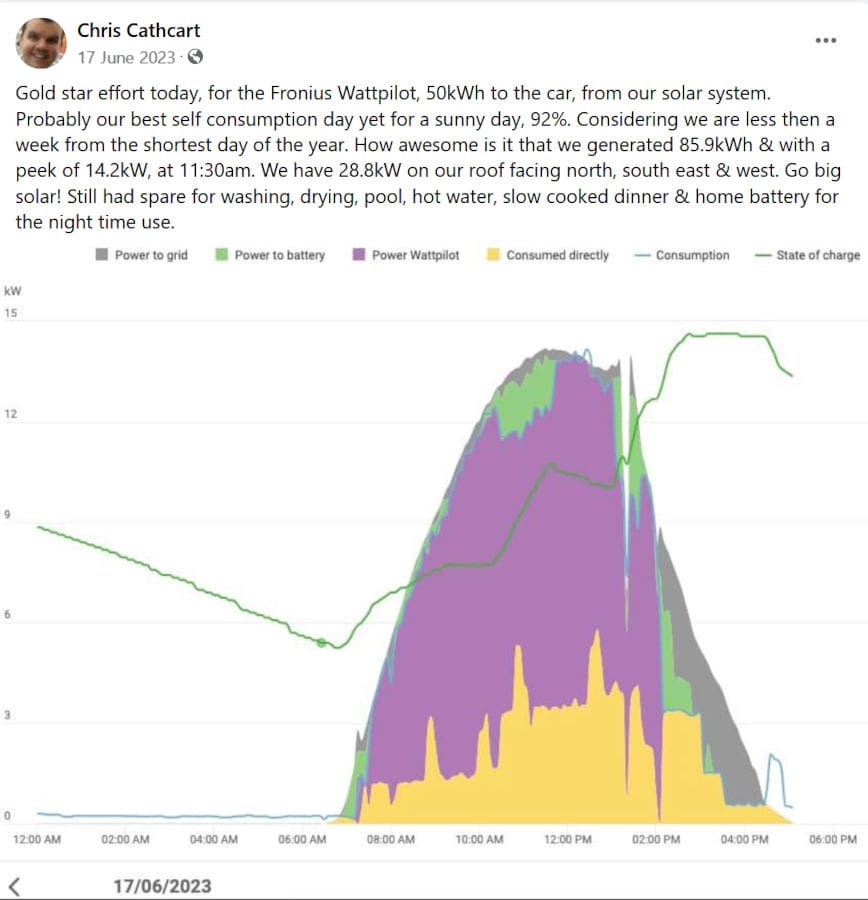
Chris loves to show Facebook it’s done, with the purple representing flexible car charging
Cheap Rates Are Anytime Rates
Many will find it better to install their own timer and take control of the load themselves rather than rely on the network company.
Using your own solar is the best way, but if your retail deal offers cheap TOU daytime rates, it won’t matter much if you import a little energy when the clouds pass over.
A simple timer is very effective for heat pump hot water. Still, for those with resistive hot water, especially on higher flat-rate plans, smarter solar management is much more beneficial.
For EV charging, smart diversion is essential because you’ll never reliably export 7kW for hours on end.
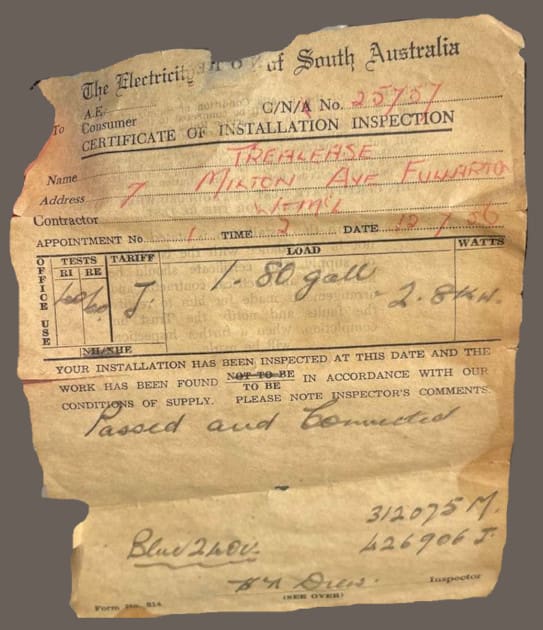
1 x 80 gallon hot water service with 2.8kW element, connected to “J” tariff. Inspected 10/7/56. image credit random vintage fridge advert on Gumtree
Technically, Controlled Load Shouldn’t Be Switched
Even though day/night switches have been available for hot water boosting since forever, network rules say you shouldn’t pick and choose between controlled load and anytime tariffs.
My understanding is the banana benders are the only ones silly enough to police this. Every other DNSP knows it’s in their interest to soak up the duck curve. Now, Queenslanders aren’t all backward, but the advice here may be different for them and their half-size hot water tanks.
Whether you prefer a heat pump or conventional hot water, a house battery, or a much bigger one with wheels to eliminate your petrol bill, the best advice I can offer is to get on with doing it. There’s no time like the present to save money with stored sunshine.

 RSS - Posts
RSS - Posts



That photo of the Port Augusta power station must have been taken, just before they closed! I could not believe how old and outdated everything was when the auction came about.
I have tried to find out if it is illegal to charge your home battery from the grid in South Australia. Why are they being so difficult?
Generally it’s not a problem – I do it every day in SA. If you call SAPN, they can confirm for you.
Hi Finn,
Why the “generally” qualification ? Could you please elaborate ?
Thanks.
Not sure where you got the idea that charging a home battery from the grid is illegal in South Australia.
I’m legally charging my Tesla Powerwall 2 from the grid between 10am and 3pm whenever there isn’t enough power coming off my PV to charge the battery.
I’ve been doing this too (but have just assumed it’s legal).
Curious to know if you’re doing this by manually changing the Powerwall settings ie. increasing the PW Backup Reserve % to a higher/high % and selecting Time-Based-Control operational mode, or are have you been able to somehow automate this ? If the latter, I’d be most grateful if you would be willing to share how you have done it. Thanks.
I’ve got a green catch diverter and it’s the best thing I ever bought it’s great getting hot water for FREE every day as I leave it on solar only albeit costing me the measly fit if I’m not producing over the 5kw export restriction !!
And off-grid, it’s the only way to fly, as it’s more than a bit dufus to flog the battery for water heating. At 14:13 today, dismal grey overcast is putting 2.3 kW into the HWS at 52.5 Hz, signalling that the 27 kWp array could maybe handle a 3.6 kW HWS element even in the half-light, without battery draw. (But I had the electrician downsize the element on HWS installation, just in case.)
On a sidenote, the woodheater’s in-flue heat exchanger provides ample hot water in winter, but markedly increases heat loss on days not cold enough to warrant a fire. (I’ll have to repair the sawbench, and rip up some tapered cedar staves for an adequately aesthetic insulating jacket to remedy that. In the interim, photons are keeping up OK.)
There’s no flow into the battery this afternoon, as an adequately oversized array has that charged each morning.
P.S. I’ve had PCBs run off for my off-grid diverter design, populated one, and coded initial firmware, but my 25 year old programmer unit has curled up its toes, and it’ll be at least a week before a replacement arrives. The first diverter will only handle 2.8 kW, as I don’t have bigger triacs in my components stash. It’ll do for here. There’s already two selectable delta-f diversion thresholds, so I can prioritise one HWS over another in poor sun.
(I can understand that the off-grid market is still too small to warrant a commercial version.)
Erik I think there’s some chance your my spirit animal, a bloke with some time to spend and some electric smarts 😉
Where you’ll find a market for solar diversion is controlling EV charging for an offgrid system.
If you can devise a good way to activate EV charging after the house battery is full that’ll be a winner.
For Victron & SMA stuff that runs frequency shift it might be easy enough to modulate EV charging at 51Hz??
For a better class of system like Selectronic they have a tech document describing how to build a pyranometer which will offer feedback once the batteries hit float… but it would be nice to have a dynamic solution.
https://selectsupport.helpdocsite.com/tech-notes/tn0075-how-to-create-a-low-cost-indicative-irradiance-sensor-pyranometer-for-24v-48v-sp-pro-s
Ah, Anthony, you’ve touched on a sore point there. I bought the Victron EV charger on the basis of advertised “surplus solar” charging smarts, but neither I nor the wholesaler have been able to figure out how to make that work in reality – despite a firmware upgrade. So, for the moment, it’s a matter of watching cloud cover, ramping charge rate up/down with the phone app, and letting the 46 kWh house battery even out the bumps.
It is with a sense of caution that I’ll be trying HWS power diversion with full AC cycles (rather than phase control), in an effort to minimise upsetting the inverters with EMI and line-transmitted harmonics. I have no idea how sensitive they may be, and have four of them (2 Victron, 2 Fronius) to render unstable if unlucky. Spreading the on and off cycles as evenly as feasible should help, as will the presence of 16 kVA of battery inverters to fill any slumps in array supply to the PV inverters. And they respond so glacially to insolation and load changes that I suspect they’ll just soldier on.
It would be child’s play to close a contactor to connect an EV charger at a chosen frequency, with reasonable generation and time hysteresis so it doesn’t click in and out on every passing cloud. (And my MG4 takes charge any time you connect it, I find.)
But how universal is the standard 1 kHz squarewave signal on one charger cable wire, with mark/space modulating the EV’s on-board charger rate? Full dynamic control is much more attractive, so worth a look when time permits. I’ll have to read up on that again,
and collect what specs I can find.
With a 27 kWp array, it’s not always necessary to wait for a full house battery before charging the EV – your 51 Hz surplus indication suffices. (I’m pumping 2.3 kW into the HWS now, while EV charging.)
P.S. Email notification of follow-ups has been missing for a year now, so it takes some effort to keep up with posts for more than a week.
“But I had the electrician downsize the element on HWS installation, just in case”
We have a 3.6kW element in our water tank and was thinking of getting it replaced with a 1.2 or 2.4 kW element.
What would be great would be a tank with both 1.2 and 2.4 so you could select either, or both for 3.6 (for those really sunny days).
But no one is going to make a tank like that given the heat pump momentum.
Hi Dale,
They do commonly make twin element tanks where one is at the bottom & the other ⅔ the way up.
Or you can get specialised assemblies that have two separate elements in one base.
They’re used in situations where you might run DC solar to one circuit & AC to the other. Can’t recall who sells them though sorry.
My ‘Smart’ meter in Adelaide has an option to manually boost the Controlled Load for a maximum of two hours.
I don’t do this often and have only had it ‘controlled’ off once. And as far as I can tell the energy is imported at the same time I am exporting solar. This suits us as we are still on the SA Premium FiT.
Here’s a day where our load followed available solar PV + took advantage of our free energy tariff 12-2PM:
https://i.imgur.com/uEAi1Fi.png
We have a Catch Green PV diverter for water heating, use an OCPP 7 kW charge station for the EV managed with Fronius data via Home Assistant and ChargeHQ, and I use Home Assistant automation to manage charging of our off-grid battery if it needs any supplemental assistance from the grid-tied PV system.
That’s not quite how it works for me here in Perth with a SolarEdge 5 kW inverter, 12 kW of panels, DC coupled battery and smart diverters for resistive HWS and for EV charging. The smart diverters are configured for excess solar mode.
The inverter is limited to 5 kW total so if 3.6 kW is going to the HWS and other house loads then 1.4 kW is left for export to the grid, and not 5 kW export to the grid and 3.6 kW to the house. The conspicuous exception is battery charging which, being on the DC side and before the inverter, means I can have 5kW charging to the battery and up to 5 kW for house loads and export, if the panels can supply that much.
Does the SolarEdge inverter have a relay contact you could run to a relay to turn the HWS on and off ? With Amber Electric the signal would be price – sometimes negative.
The SolarEdge smart diverter throttles power to the HWS up and down every few seconds, depending on how much excess solar is available right now. Works well and as you only get 2 c/kWh for export now with Western Power, self consumption is the priority.
The SolarEdge smart EV charger is similar – as long as there is at least 1.5 kW excess solar available, it sends it to the EV and throttles up and down as required to avoid any grid consumption.
With the battery powering the house overnight, no gas connection anymore/all electric house and car, grid consumption has been only 0.1 kWh/day over the 2 months since this system was installed.
So no need to muck around with relays.
Thanks for replying. I’m aware of the SolarEdge HWC which is a neat solution for $1.8k. However, I am Scottish and consequently tight as a crab’s ass at one thousand fathoms.
Seriously, I am an Amber Electric customer who’s load shifting SmartShift product offers the possibility to switch on price, which can be zero or negative. Also I am trying to minimise the number of boxes (and cost) on the wall that comprise the overall solution.
-Battery
-Backup i/f
-HWC
-Inverter
So my first choice would be software based. Say, get the SE inverter to signal the EDMI 7a meter which -off the top of my head- has relay contacts. $1.8k is a lot of Pokie money !
Thanks again
This is a surprisingly complex topic.
I discovered it when I noticed on good days once my battery was charged my solar system would only ever generate whatever the house was using plus 5kW export. Crank up the aircon or pool heater a bit higher and sure enough the solar system would perhaps not so magically start generating extra power right up to its theoretical maximum.
But for me the key to keeping grid electricity bills down (and into the negative) had two parts. First install a big enough solar system to negate any significant need to use any grid electricity at all during the day. Second install a big enough battery to negate any significant need to use any grid electricity at night.
Each person’s mileage will vary but I’d need to be convinced that the types of measures Anthony suggests here should take priority over the first two keys I mention above.
And by way of comparison my projected electricity bill this quarter with AGL is negative $87.98. I don’t pay them. They pay me.
Thanks Ross,
I’m glad you’re finding the right answers for yourself and helping out with advice for everyone else.
What capacity did you land on for your place exactly?
13.2kW panels with a 10kW inverter and 12.8kWh battery – Sunshine Coast hinterland.
And just as an additional comment the least predictable part is just how much energy the panels will produce on any particular day. This week I had a low of 36.8kWh on Sunday and a high of 72.4kWh on Thursday.
That means BIG load changes like turning the pool heating off and minimizing aircon are needed on some days just to get the battery recharged for the next night. I haven’t found any way to automate that process.
That sounds like a dinkum solution Ross.
I remember installing 3kW on my place and thinking “whacko that’s a big setup”
How things have changed.
Have you had a look at the CatchControl from Catchpower? They offer a lot of smarts with the new 6channel device being able to control a specific circuit with a relay plus control AC or heatpumps using DRM and even more with APIs I’m told.
Or for the enthusiast boffin you can get Home Assistant to do all manner of things with a small computer & some programming.
Depends a lot on your level of expertise & desire to play with computers.
There’s certainly a lot available now though.
Anthony, yes we have a catchpower solar. When it was installed the only suitable load was the pool heater but it turned out that the electronics in that don’t like having power cut off. And hot water costs us about $150 a year in gas.
Interestingly the pool heater is capable of receiving a signal to turn itself down or off but it was not wired into anything when it was installed. I think the aircon is older so it doesn’t have any features facilitating automation.
Hi Ross,
Sounds like the pool heater has DRM input which can be used to throttle it down. The new 6 channel CatchControl is set up for that and we have a blog on it out now.
are you discharging into the network at night for a profit ?
No.
At 12.8kWh the battery is just about big enough to cope with our own needs at night with reserve for getting power hungry things going in the morning. The aircon takes around 6kW for the first hour. So until solar gets going it is a great way to flatten the battery. I’ve been caught a few times unable to recharge the battery on overcast days.
Besides AGL gets enough of my surplus electricity so that they pay me instead of me paying them. As long as I get an average of around 10kWh of feed in it covers the daily connection charge. That’s what I set out to do.
It’s an interesting but surprisingly complicated subject. Without the excellent solarquotes system I doubt I would ever have started.
Thanks Ross,
We appreciate the feedback.
Cheers
What plan is that please and is it State dependant ?
It looks as though my power company is ahead of this game. I’m with AGL and have off-peak water heating through a Smart Meter.
II’ve noticed lately that I have a big power use about midday on a sunny day and have much less use in the middle of the night. I haven’t been informed of any changes and when I enquired by chat I got bots which could not answer a direct question
I suppose I need to know how the costing works if I turn on a Jug when the water is heating and are they doing this purposely.